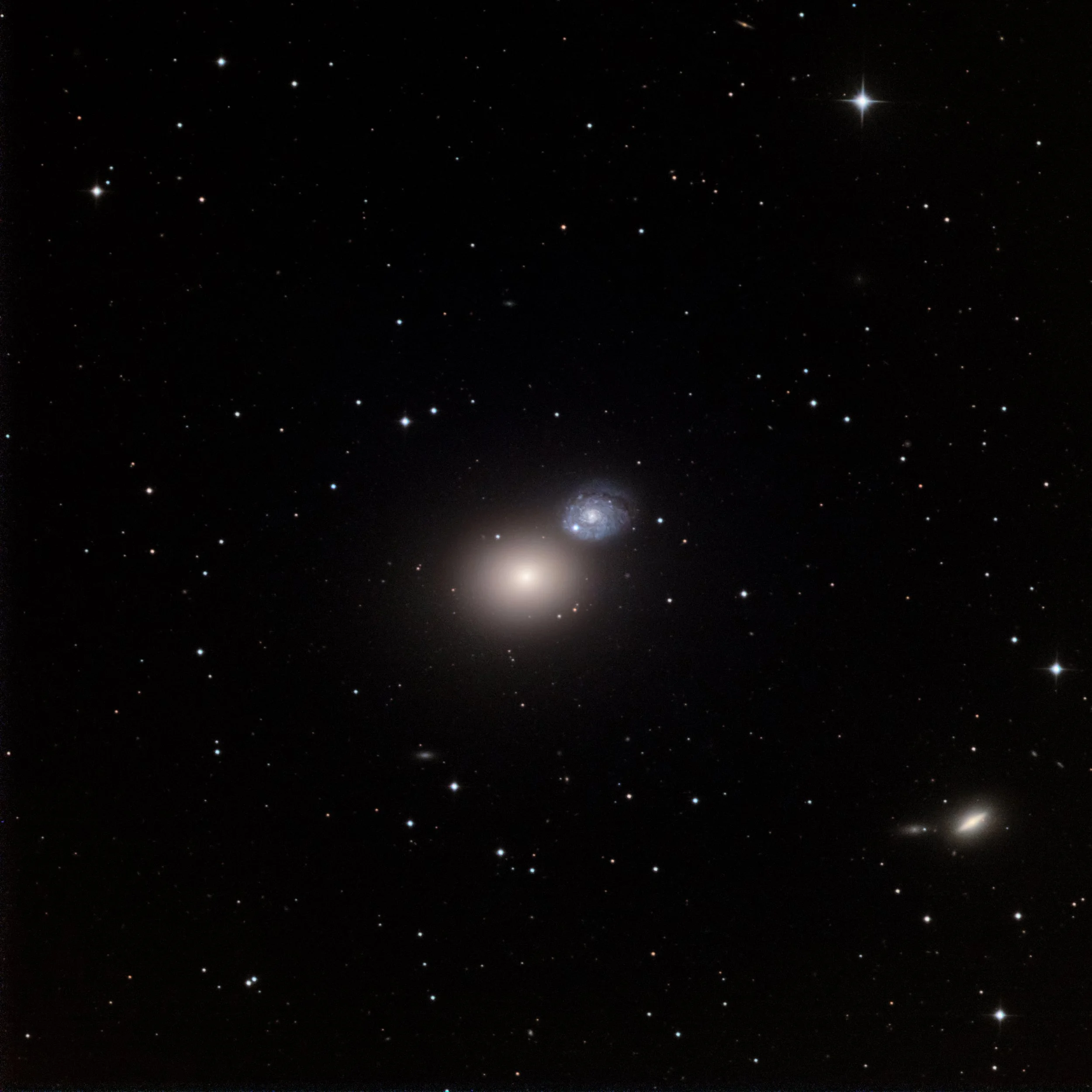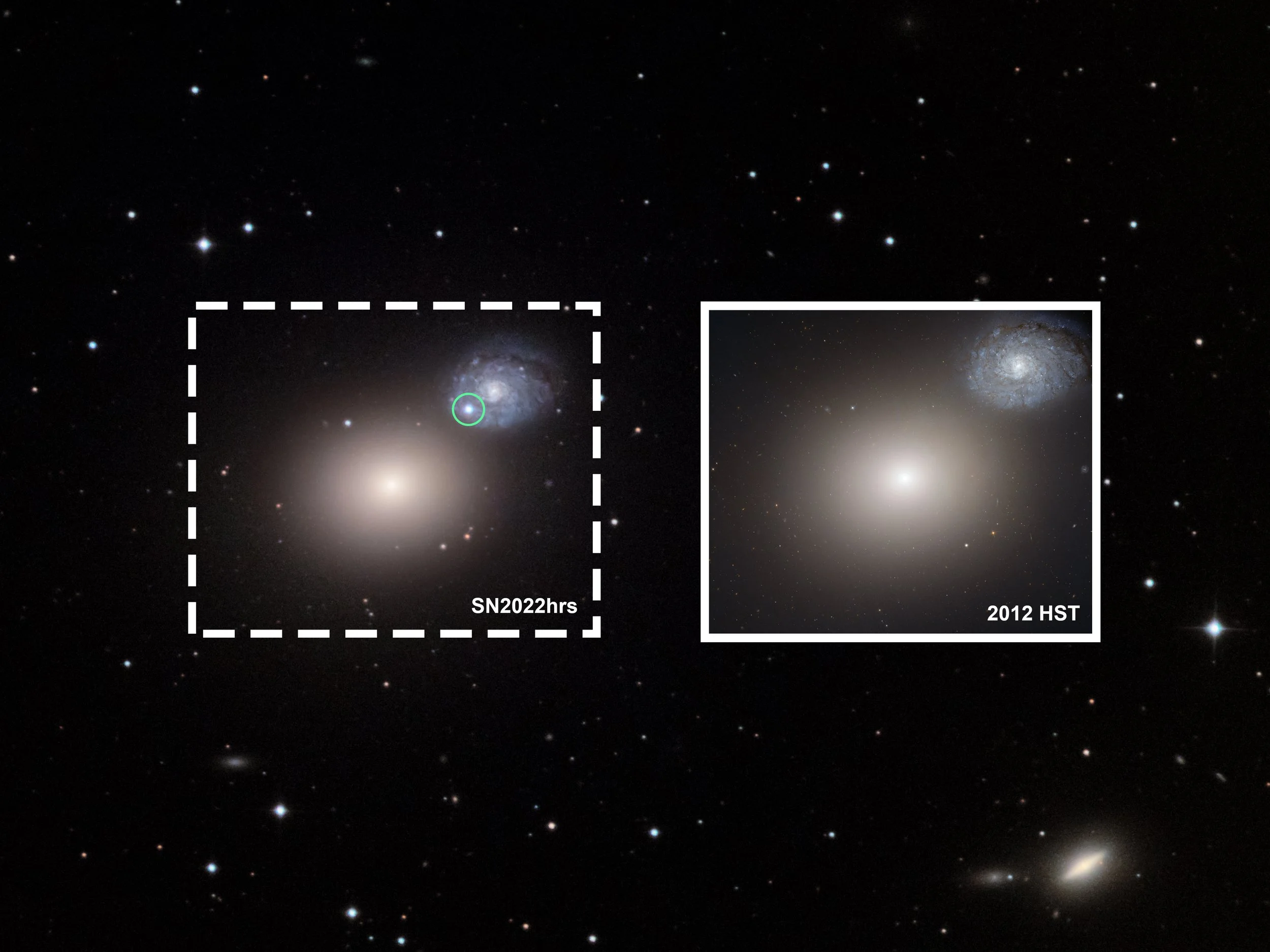Supernova in NGC4647 (SN2022hrs)
In the centre of the image are two galaxies (NGC4647 & M60) and a supernova! (A supernova is a new star that suddenly appears. It is the result of a massive star blowing itself up at the end of its lifetime.)
The light produced by the supernova started its journey about 63 million years ago. Back then, the Earth had just gone through a major extinction event that saw off the dinosaurs. Shrew-like mammals survived and they were surprised to find out that the big monsters that used to hunt them are gone. The planet is now theirs to dominate. Who would have imagined that one day, some remote descendants of those shrews would become intelligent, and would capture a little of that light and use it to puzzle out the existence of a star that is long gone in the past?
In case you are wondering which star is the supernova, see the green circle in the second image. The same target was photographed by the Hubble Space Telescope back in 2012, and you can clearly see it was a star that didn’t exist before.
The data was collected via iTelescope (a remote astronomy platform) on April 27, April 28 and April 29. It was a very exciting experience because the data was gathered by a monstrous 24-inch telescope, the most powerful telescope I’ve ever used.



